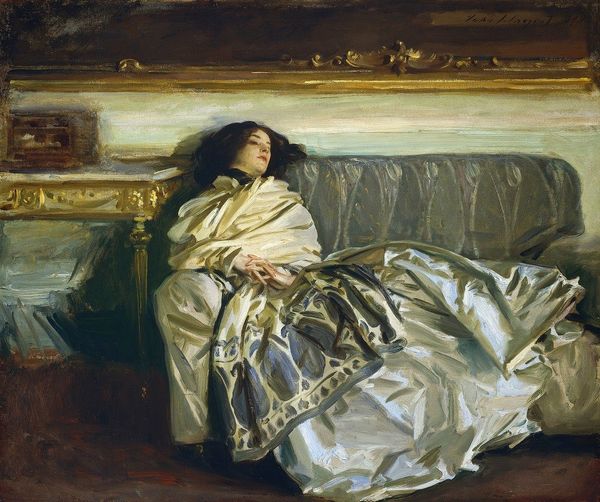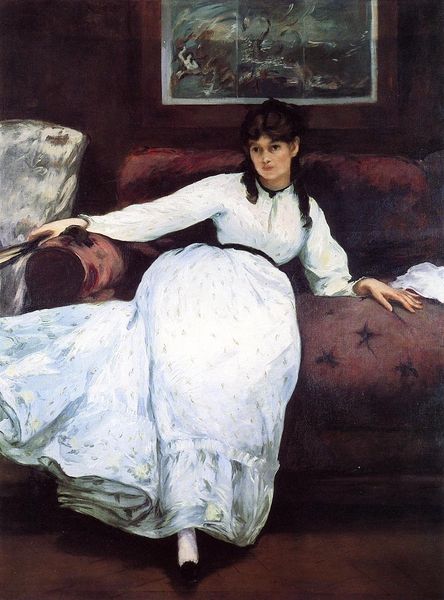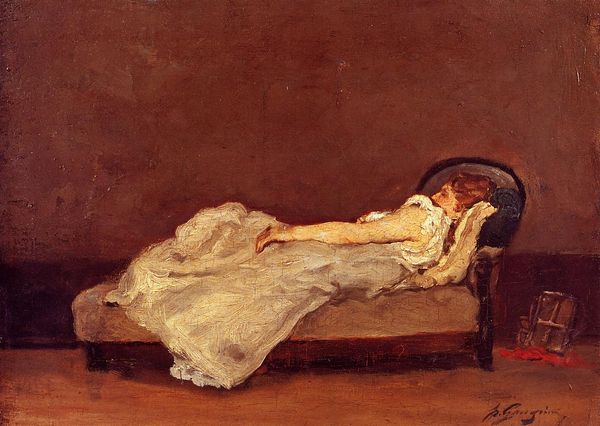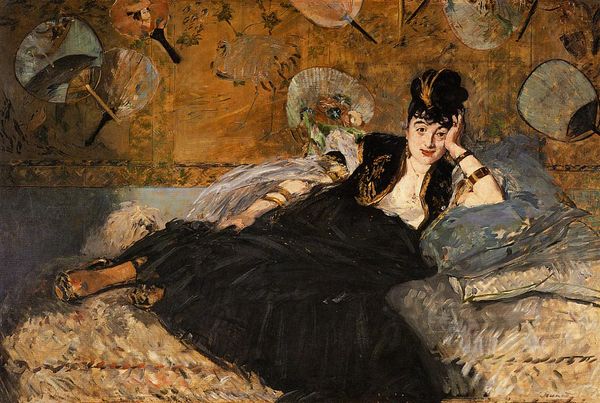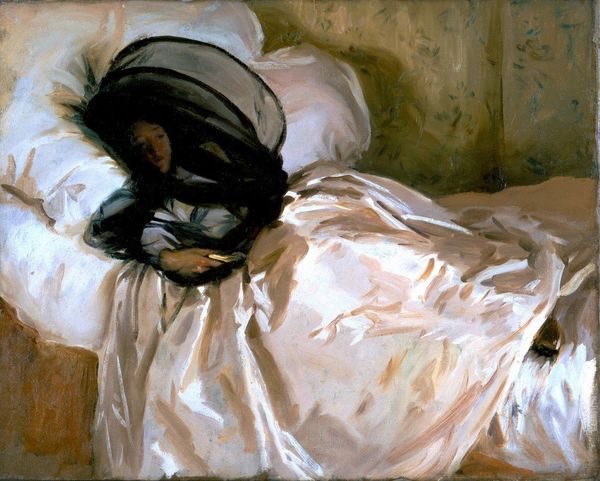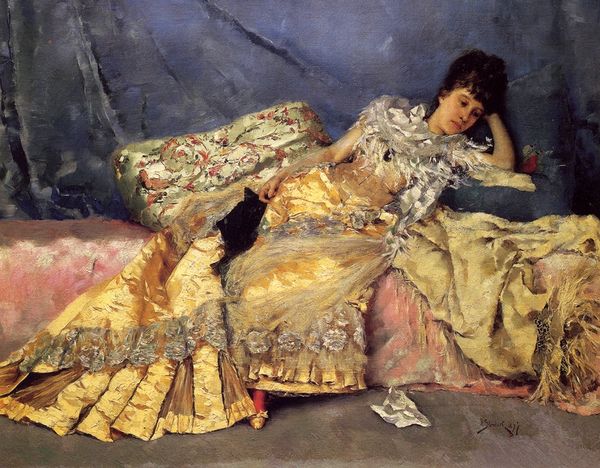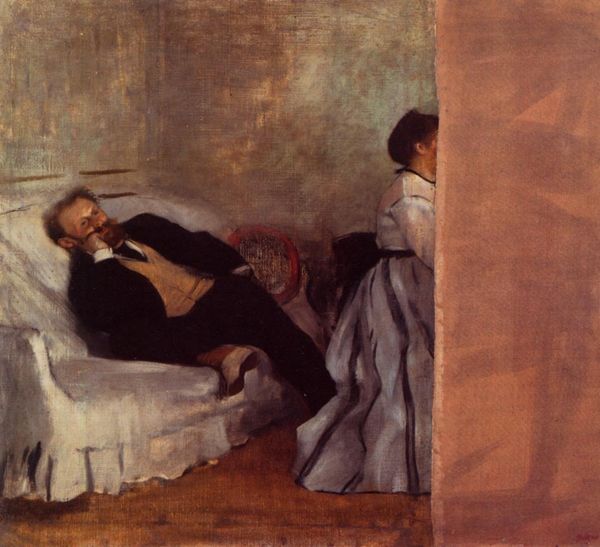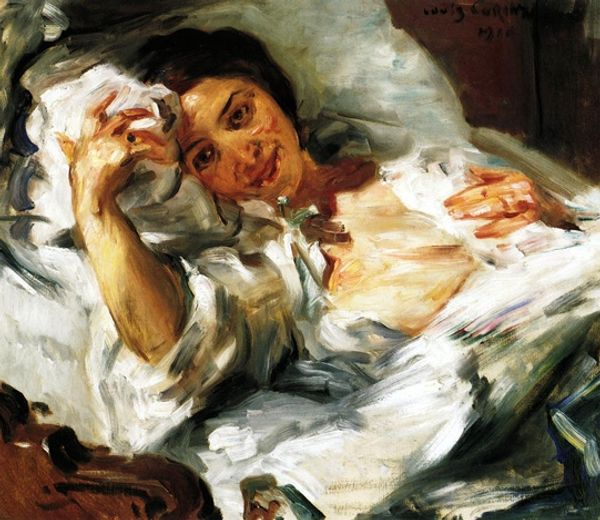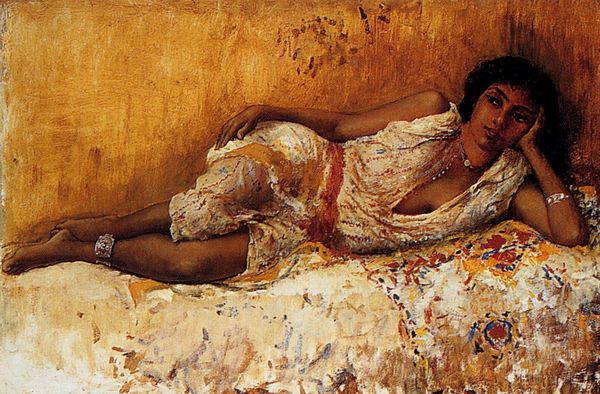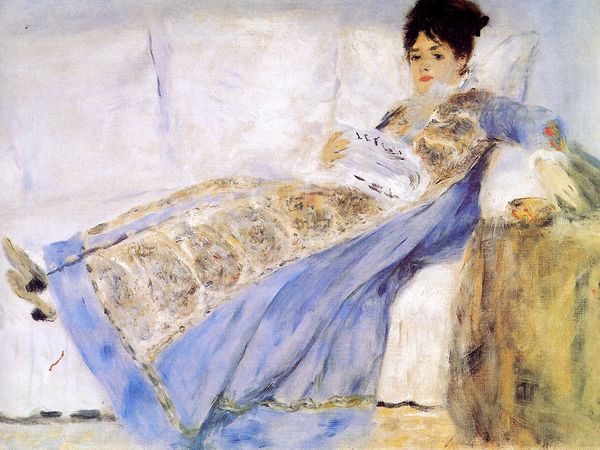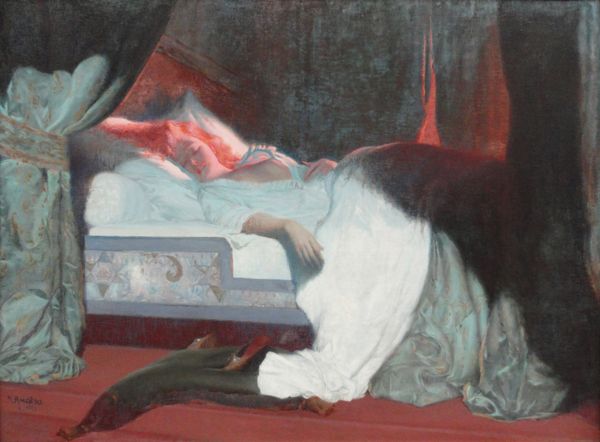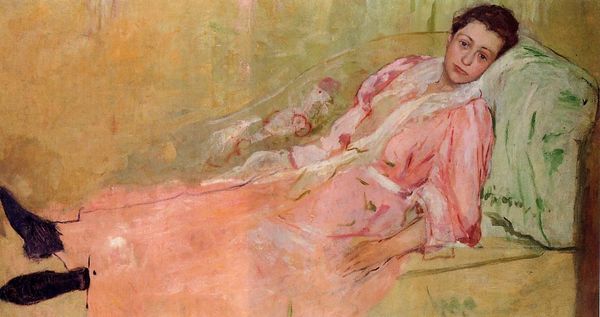
Jeanne Duval, Baudelaire's Mistress, Reclining (Lady with a Fan) 1862
0:00
0:00
oil-paint
#
portrait
#
impressionism
#
oil-paint
#
figuration
#
oil painting
#
famous-people
#
intimism
#
portrait art
Dimensions: 90 x 113 cm
Copyright: Public domain
Editor: Here we have Édouard Manet’s “Jeanne Duval, Baudelaire's Mistress, Reclining (Lady with a Fan),” an oil on canvas from 1862. The texture of that white dress seems to dominate the entire composition. What strikes you most about this painting? Curator: The way Manet uses oil paint to represent the textures of fabric—from the coarse dress to the delicate lace— speaks volumes about the industrialization of textile production during this era. Do you notice how the materiality itself creates social distinctions? Editor: I do. It's like he's using paint to investigate the impact of emerging industries on class and personal identity. It also feels intimate and somewhat domestic. Curator: Precisely. Intimacy here isn’t just about the subject. Consider how the fan is crafted, where the fabric comes from, or the social status of the seamstress who fashioned the gown. Can we divorce the depiction from the social reality of making these things? I think Manet pushes us to reconsider these connections. Editor: It definitely prompts a broader reflection on the lives intertwined with producing these commodities we often take for granted, bringing manufacturing processes closer to luxury. It makes me question the boundary between fine art and what is perceived as 'craft'. Curator: Exactly! And who dictates these boundaries? What is the labour that's visible and invisible? These are all valid inquiries. Editor: I had not considered the social context of fabric production or even the manual labor involved in the objects surrounding Jeanne. Thank you for pointing that out! Curator: Of course! Examining art through the lens of its production reveals deeper socio-economic layers often overlooked in traditional art historical analyses.
Comments
No comments
Be the first to comment and join the conversation on the ultimate creative platform.
